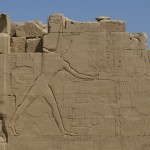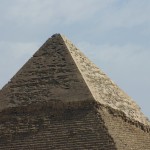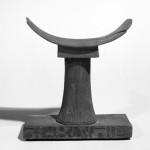
Arthur Cruttenden Mace – Taking His Rightful Place, Part 1
“You see my father was an Egyptologist, you won’t know of him, Arthur Mace, he’s long forgotten.” These words were softly spoken by Margaret Orr, the daughter of Arthur Mace to a group of school children in 1989. In this article, I will show that this is, sadly, an accurate statement regarding the general public’s lack of knowledge regarding Arthur Maces contributions to the field of Egyptology and more specifically to the science of artifact preservation. But why? [more…]

Was Egypt the First Nation State?
By Kate Phizackerley and Michelle Low. Published on Egyptological, Magazine Articles, Edition 6, May 31st 2012 Editorial (Kate Phizackerley) Was Pharaonic Egypt a nation state? This is not a new question but it is hard to answer for a variety of reasons, including: the context of the question is rooted in a modern concept (nation-state); […] [more…]
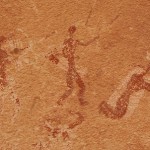
Life on Mars: The Gilf Kebir, Zerzura and the Cave of Swimmers
Rising 300m above the desert floor, and covering an area the size of Switzerland, the Gilf Kebir is one of the most arid and inhospitable places in the Sahara. Located in the Egyptian desert, near the Libyan border a 100km north of Sudan, it shares a latitude with Abu Simbel. For over 100,000 years the Gilf Kebir was home to generations of hunters, followed by two thousand years of use by nomadic herders. It was only re-discovered in 1926, and since then it has been the subject of numerous expeditions for exploration, archaeological and geological investigation and, more recently, tourism. Very remote and arid it remained an almost pristine landscape until recent decades, perfect for field research. Even NASA researchers have studied the Gilf Kebir to evaluate conditions that might prevail on Mars. [more…]

Arthur Weigall: A Man Out of Time – Part 2
As we saw in Part 1, in spite of his lack of a formal education Arthur Weigall pursued the role of archaeological excavator, achieving his dream of working in Egypt. Although his initial achievements were minimal, he was promoted to the position of an Inspector in Egypt, a role he took on with energy and dedication. He was fiercely protective of monuments from Luxor to Nubia, often falling into dispute with the authorities and wealthy patrons over the importance of preservation through proper archaeological technique. [more…]

The Birth Bower and Mamissi-Chapels in Ancient Egypt
Kate Phizackerley introduces womens’ experience of child birth in Ancient Egypt and the special birth bowers assigned to this important event. She traces how this involved into a special type of chapel, called a mammis and considers what implications might be drawn from one scene depicting Akhenaten and his queen, Nefertiti. Along the way she covers who might attend a birth and touches on some of the medical texts. [more…]
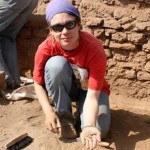
 By
By 